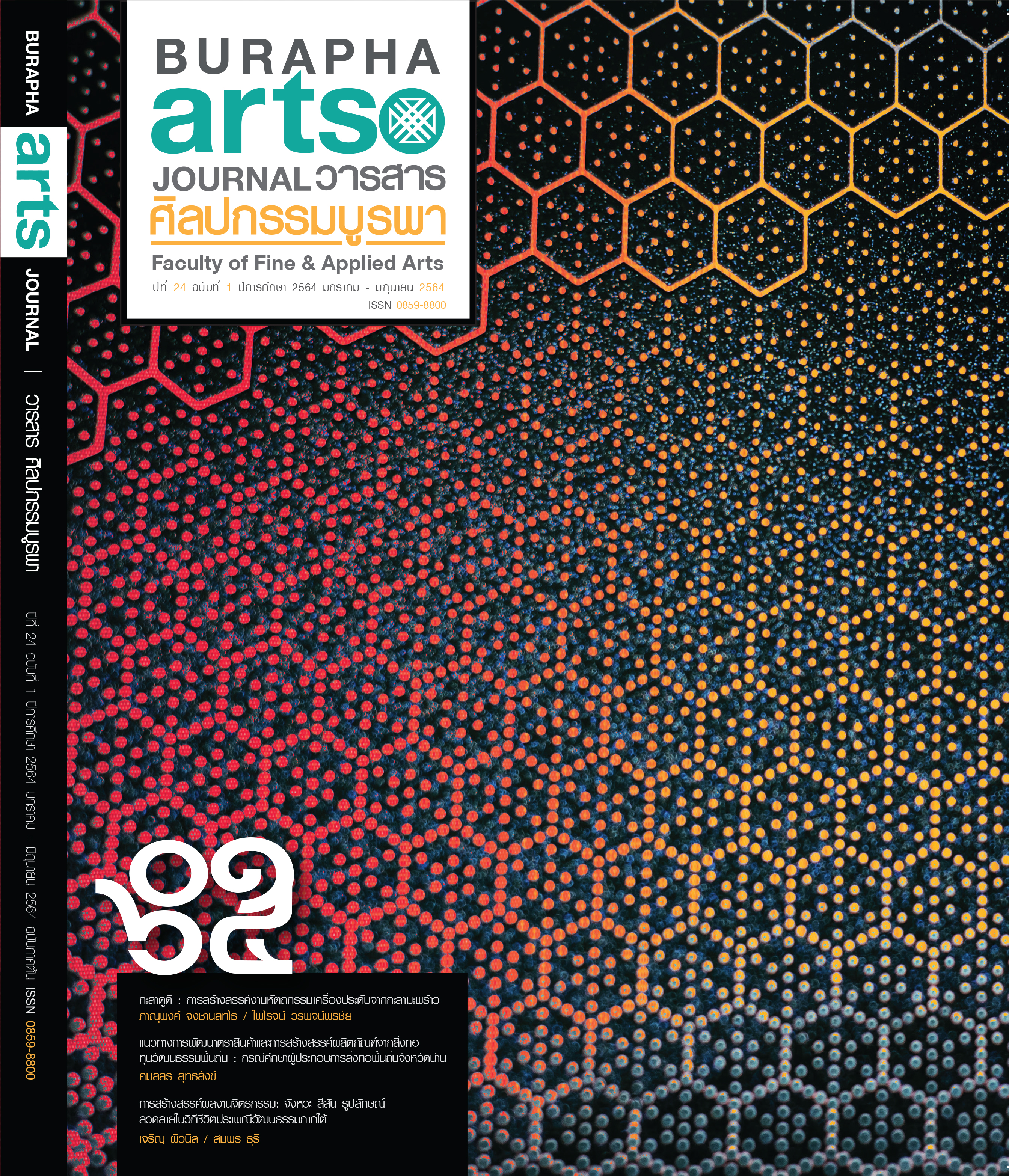การทดลองสร้างงานนาฏศิลป์ร่วมสมัยจากเเนวคิดการใช้กระบวนการละครแบบร่วมสร้าง
Main Article Content
บทคัดย่อ
This study aimed to experiment with creating contemporary dance works from the
concept of using co-create processes. The samples were seven contemporary dance students
who had passed production training, including devising theatre production, 1) inspiration-seeking
from artworks, songs, the book named Politically Correct Bedtime Stories or Ni Tan Klab
Mum, 2) ice-breaking practice, 3) practice on communication through dancing posture, 4)
communicative speaking practice, 5) improvised exercises with equipment and improvised
space movement and cooperation in solving shared defect of the performer team. The results
were that a contemporary dance model named “Start” was successfully created. The sample
students were able to develop two aspects of their potential through a co-create drama
process. The first aspect was body movement skills. It was found that the sample students
were able to use their bodies effectively to become good dancers. They were able to apply
their dancing techniques to blocking. They understood using their bodies to choreograph
complicated dancing postures to communicate the message to the audience. The second
aspect was thought. It was found that the sample students were able to learn the rationale
of contemporary dance creation through their conversation, questioning and answering,
and opinion sharing during the task. They gained self-confidence, and they were courageous
to express their thoughts regarding beliefs and attitudes openly. They were more confident
to learn and to criticize the studied issues directly. They respected others’ ideas. They
became more cognitively mature, and they developed interpersonal skills, which is an
essential element of devising theatrical work creation. The democratic atmosphere was enhanced
through the production process, which eventually indirectly led to a democratic citizen.
Article Details

อนุญาตภายใต้เงื่อนไข Creative Commons Attribution-NonCommercial-NoDerivatives 4.0 International License.
ต้นฉบับที่ได้รับการตีพิมพ์ในวารสารศิลปกรรมบูรพา (Burapha Arts Journal) คณะศิลปกรรมศาสตร์ มหาวิทยาลัยบูรพา ถือเป็นกรรมสิทธิ์ของมหาวิทยาลัยบูรพา ห้ามนำข้อความทั้งหมดหรือบางส่วนไปพิมพ์ซ้ำเว้นเสียแต่ว่าจะได้รับอนุญาตจากมหาวิทยาลัยฯ เป็นลายลักษณ์อักษร


